Taj Temple Tiger Tour
This tiger safari in India coupled with the enigma of Indian heritage and Indian culture, encompasses the perfect blend between wildlife, intense spirituality and religion. Whether it’s the religious ceremonies at Varanasi, the awe inspiring Taj, the intricately carved temples of Khajuraho coupled with iconic tiger safaris in Ranthambore National Park, Bandhavgarh National Park and Kanha National Park, you’re in for a tiger tour of a lifetime. An expedition through these formidable destinations is sure to reenergize the body, spirit and mind as you navigate a journey of cultural and natural discovery.
- Dive into an immersive wildlife experience with three signature national parks for tiger safaris in India.
- Experience unique hospitality, with some of the most skillful naturalists to guide you through your tiger safari tour.
- Witness the sun kissed Taj Mahal, A UNESCO world Heritage site and one of the seven wonders of the world.
- Immerse yourself in the Ganga Aarti at Varanasi, and witness a sea of worshippers’ surrender to the tradition at the Ghats of the Ganges.
- Discover the architectural marvel of the temples of Khajuraho, dating back to the 10th century.
Day 1 : Arrive New Delhi (By Flight)
Meet and greet our representative on arrival at New Delhi airport. From there, depart for your Hotel. Our representative will guide you through the check in procedure and handover all travel related documents for your upcoming tour. Overnight stay at the Hotel.
Day 2 : New Delhi - Jaipur (by surface, 275 kms/5 hrs drive)
After breakfast, proceed for the half day city tour of Old Delhi. In the old city, visit Red Fort which was built by Emperor Shah Jahan; Jama Masjid, one of the largest mosques in India; Raj Ghat- the memorial of Mahatma Gandhi and mesmerising walking tour through Chandni Chowk- the silver street of Delhi bustling with activity.
Post Lunch, drive to Jaipur (275kms / 5hrs). Check in at the hotel. Overnight stay at the hotel.
Day 3 : Jaipur
This morning, drive 11 km to the outskirts of the city to visit Amber Fort, the ancient capital of the State until 1728. Visit the Temple of Kali, the Hall of Victory or Jai Mahal and Jagmandir.
In the afternoon, visit the Observatory, the Palace of Winds and the City Palace and Museum. The museum has an interesting textile section, which contains dresses and costumes of the former Maharajas and Maharanis of Jaipur. Jaipur is well known for its beautiful carpets, enameled ornaments, precious and semi-precious stones, brass ornaments and many other arts and crafts. Spend time in crowded lanes & by lanes of pink city, haggling and souvenir-hunting in the evening.
Return to the hotel for overnight stay.
Day 4 : Jaipur - Ranthambore (by road, 180 kms/3 hrs drive)
After breakfast, drive to Ranthambore. On arrival, check in at the Hotel. Lunch at the lodge. Post Lunch, Afternoon exclusive jeep safari in the National Park. Dinner and overnight at the Lodge.
Ranthambore Tiger Reserve in the Indian state of Rajasthan comprises distinct forested areas with a varied conservation history and are virtually separated geographically with narrow corridors linking them to the core area of the forest. These are mainly, Ranthambore National Park, Keladevi Sanctuary and Sawai Mansingh Sanctuary comprising of Ranthambore Tiger Reserve.
Dinner and overnight at the Lodge.
Day 5 : Ranthambore
Morning & evening exclusive jeep safari in the park. Meals at the lodge. Overnight at the lodge in Ranthambore.
Ranthambore is also rich in bird diversity with over 300 species that can be seen here. In fact, for a keen bird watcher, Ranthambore and the surrounding area is a birding paradise. Some interesting resident species of birds are the Great Cormorant, Painted Spurfowl, Sarus Crane, Bronzed Winged Jacana, Sandpipers, Kingfishers, Nightjars, Painted Sandgrouse, the Indian Eagle Owl and many more winter migrants which arrive from their nesting ground north of the Himalayas.
Ranthambore encompasses an area of 400 sq. km encompassing rocky hill crests which descend to open valleys between the Aravalli and Vindhya ranges, dotted with water pools and fruit trees, this park gets its name from the thousand-year-old fortress, which lies nestled on hill above the forest. Well known for the diurnal activity of tigers, Ranthambore is special and an unusual area where the natural present meets the historical past. Sambar, cheetal, chinkara, nilgai and langur are predominant in these parts. The elusive leopard and tigers are found in this reserve with tourists standing a very good chance of seeing tigers at close quarters during the safaris.
Day 6 : Ranthambore - Agra (by road, 265 kms/5 hrs drive)
Morning exclusive jeep safari in the national park. Post breakfast, drive to Agra (265 kms / 5 hour). En route, stop at Fatehpur Sikri, the ancient abandoned Mughul capital. This 16th century capital of Mughul emperor Akbar is a complex of forts, palaces and mosques built in sandstone. The city had to be deserted because of lack of water. The white marble Tomb of Sheikh Salim Chisti, Akbar's spiritual adviser, is now observed as a Muslim pilgrimage spot here.
Overnight at the hotel in Agra.
Day 7 : Agra – New Delhi (by road, 220 kms/4 hrs drive)
After breakfast, visit the famous white marble mausoleum, The Taj Mahal, which was built in the middle of the 17th century by the Moghul emperor Shah Jehan for his wife Mumtaz Mahal.
Completed in 1652, skilled craftsmen from Persia, Turkey, France and Italy and some 20,000 laborers worked extensively for 17 years to build this edifice. Later, visit the red sandstone AGRA FORT which stands like a crescent on the banks of Yamuna River, enclosed by forbidding 20-meter high walls, with a 12- meter moat between them. Three successive Mughal emperors - Akbar, Jehangir and Shah Jehan - helped create this massive structure which contains Indo-Islamic architecture. [The Taj is closed on Friday]. Check out from the hotel.
Later drive to New Delhi (220kms/4 hours). Overnight stay at the hotel in New Delhi.
Day 8 :New Delhi – Raipur – Kanha (215 kms/5 hrs drive)
Packed breakfast would be arranged at 0400 hrs. Transfer to domestic terminal to board flight to Raipur at 0645 hrs. On arrival 0835 hrs. you will be met at the Raipur airport by our representative and drive to Kanha National Park (215 kms / 5-hour drive). On arrival, check into the Lodge. After lunch go for afternoon jeep safari in the national park. Dinner and overnight at the Lodge.
Day 9 - 10 : In Kanha National Park
Wake up at 0500hrs, tea coffee with biscuits, and proceed for the morning safari to the National park.
Kanha's sal and bamboo forests, rolling grasslands and meandering streams stretch over 940 sq km in dramatic natural splendor which form the core of the Kanha Tiger Reserve created in 1974 under Project Tiger. The park is the only habitat of the rare hardground Barasingha (Cervus Duvaceli Branderi).
This is original Kipling country of which Rudyard wrote of so vividly in his Jungle Book. Packed breakfast from the Lodge is served at a designated spot and spread on the bonnet of the Safari vehicle. Enjoy your breakfast in the wilderness of Kanha.
Continue your search for the elusive Tiger if you have not yet seen the same already, and soak in the fresh, and energizing environment around you. Return from Safari around 1130hrs. Freshen up, while Lunch is prepared.
Post Lunch, depart for your afternoon jeep safari in Kanha National Park. By a special declaration in 1955, Kanha National Park came into being. Since then, a string of stringent conservation programs has been launched, for the overall protection of the park's fauna and flora. Kanha boasts close to 38 species of mammals. Some of the inhabitants of this park are the gaur, the largest of the world's bovine; the sambar, the largest Indian deer; and the chausingha, the only four-horned antelope in the world. Other frequent visitors include the Nilgai antelope, the sloth bear, the dhole, or Indian wild dog, and an occasional Leopard. Some 300 species of birds inhabit the park, that includes the storks, egrets, black ibis, raptors, owls, and nightjars. Return at 6pm from safari. Dinner and overnight at the Lodge.
Day 11 :Kanha – Bandhavgarh (by surface, 280 kms/6 hrs drive)
Morning jeep safari in the national park. Post Lunch, depart for Bandhavgarh, (280kms, 6-hour drive). On arrival, check into the Lodge. Dinner and overnight at the Lodge.
Day 12 - 14 : In Bandhavgarh National Park
Breakfast, Lunch and Dinner at the Resort. Morning and afternoon Jeep safari in the national park.
Bandhavgarh: The national park is mainly known for high density of tigers. This is the place where famous White Tigers of Rewa were first discovered. The other wild attractions in the park include Leopards, Blue Bulls, Indian Gaur (Bison) Chausingha (Four Horned Antelopes), Spotted Deers, Sambar Deer, Wild Boar, Sloth Bears Fox, Jackals, Wild Dogs, etc. There are at least 22 mammal species and about 250 bird species in the Park. The other animals found in Bandhavgarh are Ratel, Porcupine, Small Indian Civet, Palm Squirrel, Lesser Bandicoot Rat, the Jungle Cat, and the Striped Hyenas. The reptile population in the park includes Cobras, Kraits, Vipers, Ratsnakes, Pythons, Monitor Lizards and turtles. The two-primate species - the rhesus macaque and the Hanuman langur - inhabit Bandhavgarh.
The oldest sign of habitation that can be seen here are caves dug into the sandstone to the north of the fort including several Brahmi inscriptions dating from the 1st century CE. Various dynasties have ruled the fort, for example, the Maghas from the 1st century CE, the Vakatakas from the 3rd century CE. From then onwards, Bandhavgarh was ruled by a succession of dynasties including the Chandela Kings. After independence from the British Raj, Bandhavgarh remained the private property of the Maharaja until he gave it to the state for the formation of the National Park in 1968. As the park was established, poaching and hunting was brought under control and the number of animals rose dramatically. The Tigers in particular prospered and the 1986 extension provided much needed forest to accommodate them.
Overnight stay at the lodge.
Day 15 : Bandhavgarh- Khajuraho (by road, 280 kms/6 hrs drive)
After breakfast, drive to Khajuraho On arrival, check into the hotel. Later, take a city tour of Khajuraho.
Khajuraho was discovered by chance, it is India’s second biggest single tourist attraction. Khajuraho has the largest group of medieval temples that are adorned with numerous sculptures of extraordinary grace and delicacy, celebrating the stylized and refined courtly accomplishments of beauty, love and creative arts. Once the religious capital of the Chandela Rajputs, the temples of the city date from 950-1050 AD. A wall with eight gates encloses the entire area and two golden palm trees flank each of them. Originally, there were over 80 temples, of which only 22 are now remarkably preserved.
The set of temples at Khajuraho celebrating Hindu religious thought in its mystifying variety of scope and inclusion stands distinguished from rest of the Hindu temples. The temples highlight the existential ethos in religion that venerates ‘Yoga’ and ‘Bhoga’. ‘Yoga’ is union of the self with the Almighty, while ‘Bhoga’ is the path to God through physical pleasure. The temples at Khajuraho, dedicated to physical love and pleasure, which are testimony to this philosophy. Declared a World Heritage Site in 1986, Khajuraho is a prominent, must-see destination and its temples are India’s unique gift to the world as they capture life in every form and mood in stone. Evening Sound and Light show at Khajuraho. Overnight at the hotel in Khajuraho.
Day 16 : Khajuraho – Varanasi (by flight)
Morning after breakfast, visit the Eastern and Southern group of temples. The Parasvanath temple of the Eastern group is the group's largest Jain temple. The themes depict, in charming detail, everyday activity. Also, visit the Kandariya Mahadev temple dedicated to Shiva and the Chaturbhuj temple of the Southern group.
Afternoon, transfer to the airport to board the flight for Varanasi. Leave Khajuraho for Varanasi by AI 405 (1405 / 1505 hrs.) Assistance by our representative on arrival at Varanasi airport and transfer to the hotel.
Varanasi is one of India’s most important pilgrimage sites and the holiest of holy cities for Hindus. Known also as Kashi and Banaras, Varanasi is one of the world’s oldest living cities, and has been a center for learning and culture for well over 2000 years.
Evening: Visit the “Ghats” or bank of the Ganga River. This is a fascinating walk as you can experience the cultural ethos that guides the life of the pious. See the rituals that take place to the setting sun and the ablutions that are performed in the river. As boats float down-stream, some carry goods, fruits and vegetables, while others carry the pious who perform ceremonies along the river.
On the banks or “Ghats”, you can see some absorbed in prayer and in the chanting of hymns, while others are engaged in commerce such as hair-cutting, massaging and even ear cleaning! Walk across to the Manikarnika Ghats, where you can see cremation performed with intense rituals - the process of sending the departed soul to the heavens. Hindus believe that the gateway to the Heavens and for the Re-incarnation of the Soul `in a better state’, is possible when life’s last journey is from Varanasi. Overnight in Varanasi.
Day 17 :Varanasi
Early Morning: Take a boat ride at dawn down India's most sacred river, The Ganges. Sun rise at the holy river is a truly tranquil and breath taking sight with pilgrims standing waist-deep in water, praying to the rising Sun. See the famous Vishwanath temple with its spires covered with gold, dedicated to Shiva, the presiding deity of the city. Return to the hotel for Breakfast
Also, visit Sarnath a city located 13 kilometers north-east of Varanasi near the confluence of the Ganges and the Gomati rivers in Uttar Pradesh, India. The deer park in Sarnath is where Gautama Buddha first taught the Dharma, and where the Buddhist Sangha came into existence through the enlightenment of Kondanna. Singhpur, a village approximately one km away from the site, was the birthplace of Shreyansanath, the eleventh Tirthankara of Jainism, and a temple dedicated to him. Overnight in Varanasi.
Contact customer care for pricing at info@tigerjourney.in or give a call on +91 9630507774

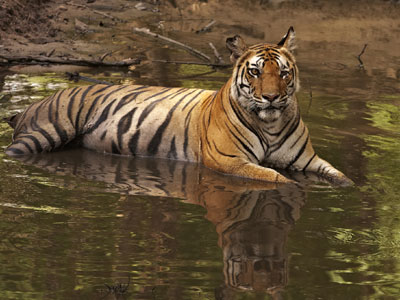
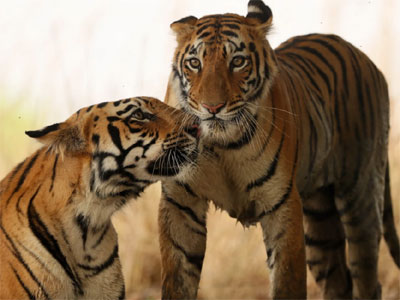

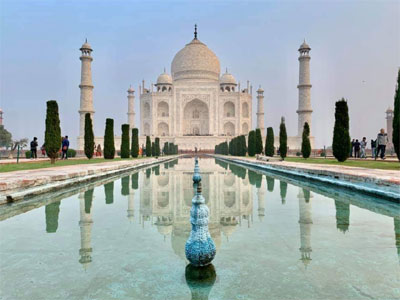

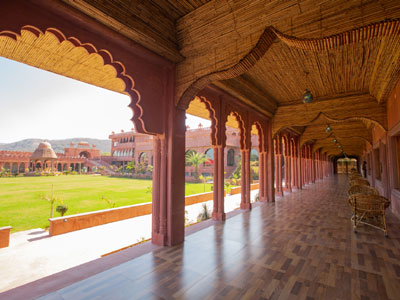
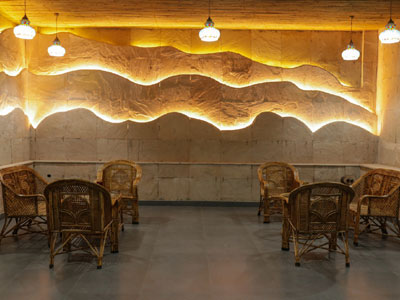
Important Notes
- Bandhavgarh, Pench & Kanha National Parks are closed for afternoon safaris on Wednesdays.
- Tiger Journey reserves the right to change the hotels, lodges to similar category in case of no availability.
- Tiger Journey reserves the right to reroute the itinerary in case of non-availability of Flight/ Train tickets or other reasons of similar nature.
- Park fees may change without prior notice. This is beyond our control and any increase levied will be passed onto you.
- There are limited safari vehicles allowed to enter in the national parks and are most difficult to book at a short notice. Please book your tour much in advance.
- The published price is not applicable during the Christmas and the New Year period.
- Check-in and check-out time at all hotels is 12 noon unless otherwise specified.
Tours
National Parks
Explore

Post - Tala, Bandhavgarh National Park, District - Umaria, Madhya Pradesh, Pin code - 484664
+91 9630507774, +91 9340711175Email : info@tigerjourney.in
© 2020 All Rights Reserved






